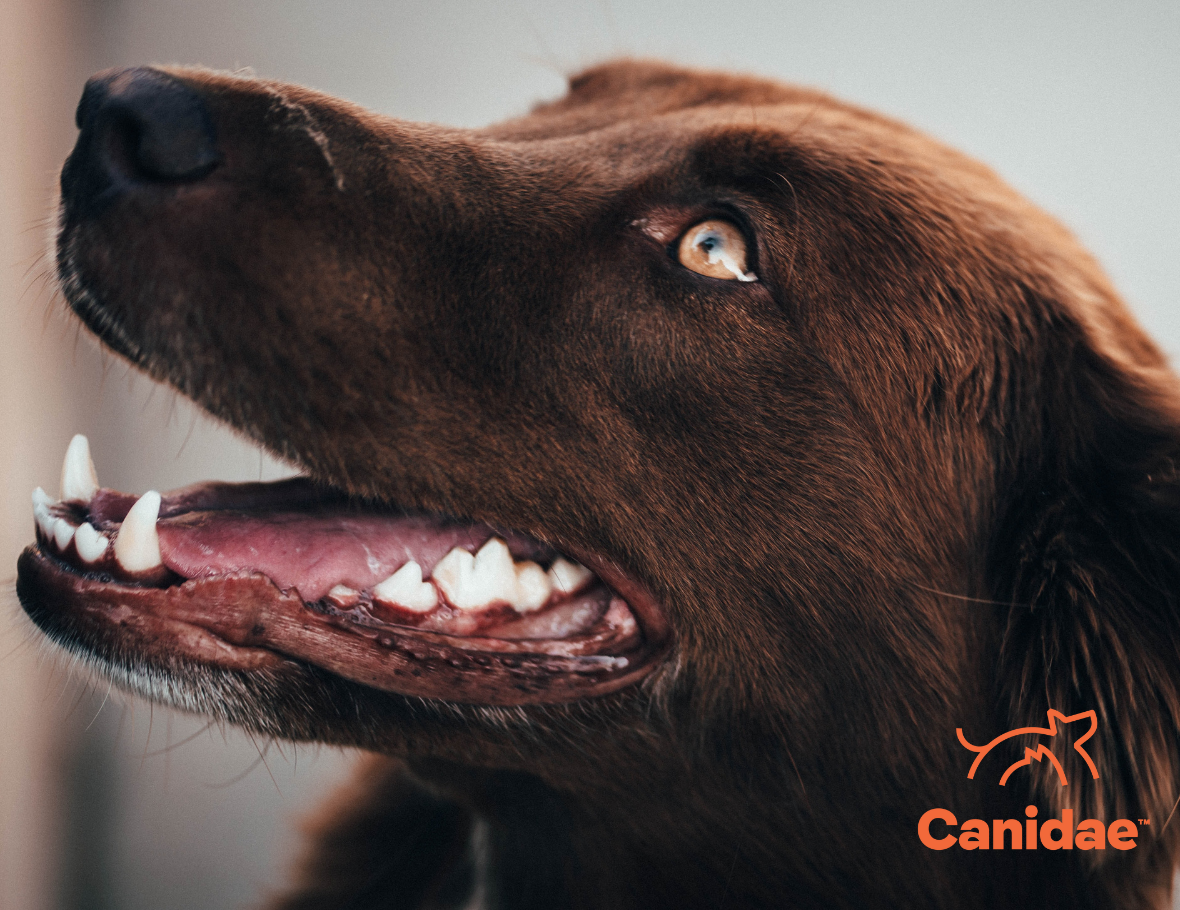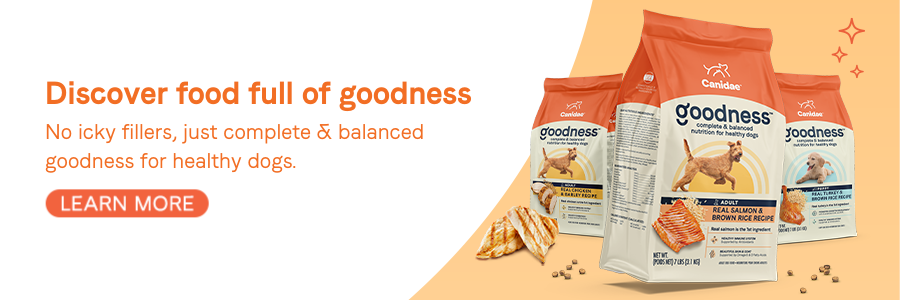How to Brush Your Dog's Teeth & Other Doggy Dental Advice

While most pups have more bark than bite, adult dogs still pack a whopping 42 teeth into their mouths. Traditionally they would have needed them for tearing up freshly caught prey, but nowadays we mainly associate them with their derpy grins. You may enjoy seeing your dog’s teeth, but did you know that not caring for them can result in serious problems for your pooch?
Join us as we take a look at dog dental health and walk you through the important steps of how to brush your dog’s teeth.
Periodontal Disease in Dogs
Does your dog’s mouth smell? While it would be crazy to expect minty fresh breath, one sniff of your dog’s mouth shouldn’t leave you retching. If your canine friend has doggy bad breath it may be a sign of something more serious.
Around two-thirds of dogs over three years of age show signs of canine periodontal disease. Periodontal disease involves infection and inflammation of the tissue surrounding your pup’s teeth, and if untreated, can spread into the tooth socket and cause painful tooth loss.
What Causes Doggy Dental Disease?
Periodontal infections start when excess bacteria build up and become plaque and tartar. When plaque comes into contact with your dog’s gums it can provoke inflammation and disease, such as gingivitis.
So how do you protect your pooch’s fangs? Well, just like with your very own teeth, the best preventative measure is to brush them!
How to Brush Your Dog’s Teeth
What Should You Use to Brush Your Dog’s Teeth?
Toothbrushes
You can buy toothbrushes that are specially designed for dogs (although that doesn’t mean they’ll be able to use them by themselves!). Some brushes have angled handles, while others have multiple heads. For more control, you could even use a “finger brush” which is designed to fit over the tip of your finger.
Remember to rinse thoroughly after brushing and replace the brush every three months. If you have more than one dog, you should treat each one to her own brush for hygienic reasons.
Toothpaste
Keep your precious pup away from human toothpaste at all costs. Some toothpastes can be harmful due to high levels of sodium, and others contain xylitol which is toxic for dogs. Baking soda is often touted as a natural alternative to toothpaste, but it can upset your dog’s stomach and doesn’t taste great either!
Only use toothpaste that is made specifically for dogs. The good news is you can now find it in a variety of dog-friendly flavors such as chicken, beef or peanut butter.
Your dog might not be too happy about it at first, but with a bit of patience, you can train her to sit tight while you make those teeth white.
How Do I Brush My Dog’s Teeth?
You should make brushing your pet’s teeth as pleasant as possible by petting her, praising her and reassuring her throughout. Your priority should be to make sure your dog is comfortable. Follow these steps and you’ll get there in no time:
- Before cleaning your dog’s teeth and gums, wait for her to be in a calm and relaxed mood. If she seems anxious or stressed, stop and try again later.
- Position yourself next to her so that you’re in easy reach of her teeth.
- Treat your first few attempts as training sessions — take things slowly and simply rub your finger or a soft cloth over the area where the gums meet the teeth. Don’t worry about the insides of the teeth: her tongue should be able to remove enough plaque there — and you don’t want to fall victim to an accidental bite!
- When she’s finally comfortable with this type of contact, it’s time for her to try some toothpaste specifically for dogs. First, let her taste a bit from your finger. Next, add a little to a soft cloth and rub it gently over her teeth.
- Once she’s completely comfortable with the above, it’s toothbrush time! Add a small amount of doggy toothpaste to the brush and then place the bristles at a 45-degree angle to her teeth. You might have to gently raise her lips to do the upper teeth, or slightly open her mouth to get to the bottom set. Brush in small circles and remember to be gentle.
- Always start slowly, and perhaps focus on the back teeth and canines first, as that’s where plaque and tartar gather the quickest. You can gradually build up to brushing all of the teeth, but remember this may take days or even weeks.
How Often Should You Brush Your Dog’s Teeth?
Just like with humans, brushing your dog’s teeth twice a day is preferable. Once it becomes part of their daily routine, dogs generally don’t mind having their teeth brushed… and might even enjoy it a little!
We all lead busy lives so we know such a regular brushing schedule might not be realistic. Still, veterinarians recommend a minimum of brushing her teeth three times a week to ensure the sufficient removal of plaque.
It might come as no surprise that it’s easier to make tooth brushing a part of your dog’s routine when she’s a puppy. Just like pet parents, some dogs get more stubborn as they get older, but you can still teach them new tricks!
Vets recommend brushing around 30 seconds per side, meaning two minutes in total should be enough. If you’re wondering how long that will feel like for your pooch, you might be interested in our blog “Do Dogs Have a Concept of Time?”.
Other Ways to Protect Your Dog’s Teeth
The VOHC (Veterinary Oral Health Council) keep an up-to-date list of products that they approve for the protection of your dog’s teeth, including some dog foods for dental health.
Special Chews, Toys and Treats
Chewing can benefit your dog’s oral health, which is why dental chews and toys are a good option. Natural chews like cow ears and chicken strips can be a great way to get some chewing in, but non-edible alternatives also work. Still, be vigilant: some chew toys are too hard and can cause other dental issues.
Special treats that are designed to prevent the buildup of plaque are growing in popularity. If you have any doubts about whether something is suitable for your pup, don’t forget to ask your veterinarian.
Other Forms of Oral Care
Although brushing is the gold standard, there are oral rinses and water additives for dogs that can be beneficial as well. These contain antiseptic agents which help decrease bacteria. Wipes can be used to remove plaque, but bear in mind that none of these options can get into all of the nooks and crannies that toothbrushes can.
Visit Your Veterinarian
Your vet knows what’s best for your dog’s teeth and will be able to advise you on the best course of treatment. Most visits include a routine oral exam, and if it looks like a lot of tartar has built up, they’ll most likely recommend a dental cleaning. It is best to have dental procedures performed when problems are initially noticed rather than putting them off and risking additional complications.
Keeping up on pet dental care is one surefire way of maintaining your dog’s dental hygiene as well as supporting their overall well-being.
All Canidae® recipes are nutritionally dense and balanced to perfection with whole-body health in mind. Boasting premium proteins and HealthPlus Solutions®, Goodness Dry Dog Food: Real Chicken & Barley is just one of many recipes that provide the ideal blend of vitamins, minerals, probiotics, and antioxidants.
If you’re not sure which Canidae recipe to feed your dog, check a pet food expert’s recommendations or try our pet food quiz.
Speak to your vet about transitioning to Canidae today.

